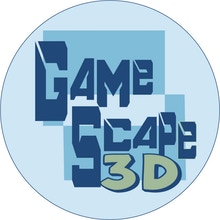Introduction
Sometimes, PLA just isn’t enough. Typically the next step from here is either PETG or ABS. What if you need something just a bit stronger, flexible, and easy to print? You’re probably looking at some sort of nylon. If that’s the case.. you should take a strong look at Taulman3D Bridge nylon. Taulman3D makes bridge in just a few colors,
Why is it called ‘Bridge Nylon’?
This stuff is named Bridge nylon because it bridges the gap between nylon and ABS/PETG in ease of printing and cost. It is relatively inexpensive compared to other high strength 3D printer materials. Taulman3D Bridge nylon is nylon for first time nylon printers. It shares a lot of the good qualities that make nylon a strong material, but also possesses some non-nylon characteristics to make it easier to print.
Does it like Water?
nylon is notoriously hygroscopic, it will wick the water out of your air as you are printing with it. Most kinds of nylon also require a drying rig as you are printing with it. I have noticed that Taulman3d Bridge nylon doesn’t get water logged nearly as often as some different nylon brands that I have used in the past. I have let this sit out over night, after a print job, and used it the next morning without issues. You will know that your nylon needs dried when it prints with bubbles or comes out cloudy, hazy or brittle. When this happens
How about those Print Temps?
Printing with nylon requires high print temps. I have found that the best way to accomplish this is through an upgraded Micro Swiss all-metal hotend. You will more than likely also need to modify your printer’s firmware. Most printers come equipped with a thermal limiter at 255C. Not to get too far ahead, but due to the cold temps currently in Michigan, I was printing my Taulman3d Bridge nylon at 265C. If your printer can’t print this hot, you will need to try it at your printer’s max or edit the firmware.
Printer Test Bed
All of the prints that I will be showing off were printed on my Tevo Tornado. It is running a custom configuration of Marlin bugfix firmware that I configured personally. It is also equipped with a Micro-Swiss all-metal hotend with a 0.4mm nozzle. The rest of the printer is stock, besides a different cooling duct for the stock blower fan and removing the stock build-tac surface. I found that nylon loves sticking to glue on a glass bed, so I just applied the glue stick directly to the Tornado’s glass bed for all of these tests.
Printer Settings
I set up my nylon profile exactly as Taulman3D lists it on their website, except for the temperature. I had to run this a little bit hotter because my ambient temperature was around 20-25c. Taulman3D also suggests an enclosure when using Bridge nylon, but I didn’t have any negative experiences without one. I kept my retraction the same as my PLA configuration which is 2.5mm @ 60mm/s. All of the print speeds were set to 30mm/s, except for the initial layer which I kept at 20mm/s. If you can get your nozzle temperature up to 250-265c, you should be able to print Taulman3d Bridge nylon without too much of an issue.
How did it do?
My favorite thing about printing with Taulman3D Bridge nylon was how nice it printed. It was very clear with low opacity. The layers bonded fantastically at 265C and the prints looked very nice. When printing at 245-250C, I had some issues with delamination between layers. The print would easily break apart and could be separated line by line. Printing the Skully, I noticed that some lines were more or less opaque than others. I think this is due to my hotend calibration because the temperature would walk a bit between 261-268C. The printer is also located close to a window, so there is a possibility that a slight draft could have also affected this. Besides the color difference, the layers appear to be just as strong. There was a little bit of deformation around the top of the eyes
What Should You Print with Bridge Nylon?
Well, you can print anything you want with nylon. nylon has really good impact resistance, flexibility and even self lubricates. If you have a model or design that has moving 3D printed parts in it, you should take a look at printing it with Tualman3D Bridge nylon. This tiny robot with printed in place joints makes a perfect example. I also printed this ice scraper. Hopefully the end of the ice storms are near, but if not I will try out this scraper!
Thermoforming
There are certain applications that are better for nylon, and there are some things that nylon isn’t good at. I printed my hopefully soon to be a huge hit recorder holder. This model requires thermoforming to get the correct fit for the recorder to snap into it. The part is only 5mm thick, 20mm wide, but nearly 200mm long. With that that long, thin part there is a lot of flexibility with nylon that I wasn’t expecting. I also attempted to thermoform this part in a hot water bath heated to over 150C and it just laughed at me. So if you are looking for a part to hold up to high heat, print it in Taulman3d Bridge nylon! This part in Bridge nylon was far too flexible to be useful.
Conclusion
Taulman Bridge nylon is a fantastic ‘first’ nylon to buy. It is very easy to print with and I didn’t have any major issues with curling or warping. There was some minor warping during the ice scraper, but this was kind of expected with a large flat nylon print with no enclosure. I will continue to find some uses for nylon and plan on documenting some more nylon articles using this Bridge nylon for a few follow-up articles on working with nylon and some post processing techniques as well. If you have a reliable way to get to nylon’s printing temperatures, Taulman3D Bridge nylon is a no brainer!
You should check out my article on 3D Hero Wood PLA! It’s another great filament to use with your all-metal hotend!
The post Taulman3D Bridge Nylon Review: Easy to Print Nylon! appeared first on Inov3D.


